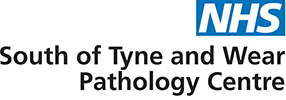Bilirubin (Total and Conjugated/Direct)
Code:
BILIT
Sample Type:
Serum (Gold Top)
Minimum volume: 1 mL
Paediatric minimum volume: 0.5 mL
Ref Ranges/Units:
Adults and children (>14 days) – Total bilirubin 0-21 μmol/L
Neonates (<14 days) – Total bilirubin 0-200 μmol/L
Paediatric results of >340 μmol/L (total bilirubin) and/or >25 μmol/L (direct bilirubin) will be phoned to the requesting clinician.
Turnaround:
Same Day (60 minutes from receipt for Urgent Samples)
Stability:
1 day at 15‑25°C
7 days at 2‑8°C
6 months at -20°C
Special Precautions/Comments:
Conjugated (direct) bilirubin is not reliable if total bilirubin is less than 30 μmol/L.
Conjugated bilirubin concentration will decrease with exposure to light – if sending repeat sample for confirmation please protect from light.
Additional Information:
Bilirubin is a by-product of heme metabolism. Free bilirubin is potentially toxic and at high levels can cross the blood-brain-barrier causing cerebral toxicity. Reversible binding to albumin prevents this and allows unconjugated bilirubin to be transported in the blood to the liver where it is conjugated prior to excretion in the urine and faeces.
As such, bilirubin is present in the serum in 3 forms:
- Unconjugated (indirect) bilirubin – reversibly bound to albumin
- Conjugated (direct) bilirubin
- Delta bilirubin – irreversibly (covalently) bound to albumin (small fraction of total bilirubin)
Significantly increased bilirubin clinically presents as jaundice (yellow discoloration of tissues due to deposition of bilirubin). Jaundice is a common finding in neonates and is often a response to birth. Hyperbilirubinaemia is less common in adults and may also present as jaundice if significantly elevated.
In the investigation of hyperbilirubinaemia or jaundice, it is often useful to measure the total bilirubin and direct bilirubin as this can help identify the cause. An estimation of the indirect bilirubin can then be calculated. Total bilirubin is included as part of a liver profile (LFT).
An increased direct bilirubin may indicate a hepatobiliary obstruction (cholestasis) which may be intrahepatic (such as cirrhosis) or extra-hepatic (such as a tumour).
An increased indirect bilirubin is a rarer finding in adults but may be caused by increased due to increased production of bilirubin (such as in haemolysis or rhabdomyolysis), decreased hepatic uptake of bilirubin (may be drug-related e.g. rifampicin), or abnormalities in conjugation (such as in Gilbert’s syndrome or Crigler-Najjar syndrome).
Mixed hyperbilirubinaemia can be seen in impaired secretion of conjugated bilirubin (such as in hepatocellular disease, Rotor syndrome or Dubin-Johnson syndrome).


